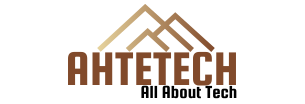The heights of future buildings are poised to grow higher as more people are expected to live in cities due to the shortage of space and urbanisation.
Current high-rise buildings have an average height of 300 metres but the Burj Khalifa in Dubai has a height of 828 metres while Saudi Arabia’s Kingdom Tower will have a height of 1,001m when completed in 2020.
“The higher the building gets in the future, the more the technology is needed. The actual technology the roped elevator can go has reached the maximum and new technology is needed to attain further heights,” Prof. Michael Cesarz Miguel, CEO for Multi elevator system at ThyssenKrupp Elevator, told TechRadar Middle East.
Vertical and horizontal movements
Multi makes use of the linear motor technology developed for the Transrapid train or Japan’s maglev train and allows multiple cars in a single shaft, both vertically and horizontally.
Moreover, Miguel said the rope-less elevator technology has the potential and a much-needed solution for sky bridges.
Economically and technically, he said the ropes can go up to between 300 and 400 metres and up to 500 metres with stress, which means the efficiency of a traditional elevator suffers.
With Multi, he said it can go up to 5,000 metres but “we have regulations as nobody thought of buildings with those heights some years back. In our portfolio, it can go up to 1,600 metres.”
“Multi is an ideal solution for the UAE as the country is an early adopter of innovative technologies and is at the forefront of the real estate development,” he said.
Less sensitive to earthquakes
The world’s tallest buildings need to support increasingly heavy cables required to lift elevator cars but the swaying of buildings due to heavy winds puts a lot of stress on conventional cabins and the elevators may not be used for safety reasons.
Since Multi is not electrified, Miguel said that linear motors are powered by electromagnetic coils embedded in the rear wall of the shaft.
As multiple cars can share the same shaft space, he said the amount of real estate lost to elevator infrastructure is less than the conventional system and it is less sensitive to earthquakes.
“It is not a mass product and more expensive than a conventional elevator but needs fewer shafts. So, the real estate developer can rent out more space,” he said.
Furthermore, he said that the initial investment for installing a Multi will be higher but the cost can be offset by the reduction in the number of elevator shafts.
Working on 20 projects globally
The company is working with OVG Real Estate’s new East Side Tower in Berlin to install Multi and expect to be operational by 2025.
“We will be showcasing our technology at Dubai Expo 2020. We are working on 20 projects globally, three projects in the Gulf. Without smart buildings, you cannot have a smart city. We will use less ropes in the future and more linear motors, but that will take time,” he said.
Miguel, who is an architect himself, has worked on both the technological and architectural aspects of buildings across several real estate asset classes, including Dubai’s Majid Al Futtaim Shopping Mall, said that the rope-less technology offers new architectural and design possibilities.
- CIOs losing visibility and control over apps and workloads in the cloud
- Digital journey should be naturally pushed by CEO, CFO and CIO
- First UAE-made electric scooters to be rolled out in September
from mohammadahte https://ift.tt/2SJQWAo




0 Comments